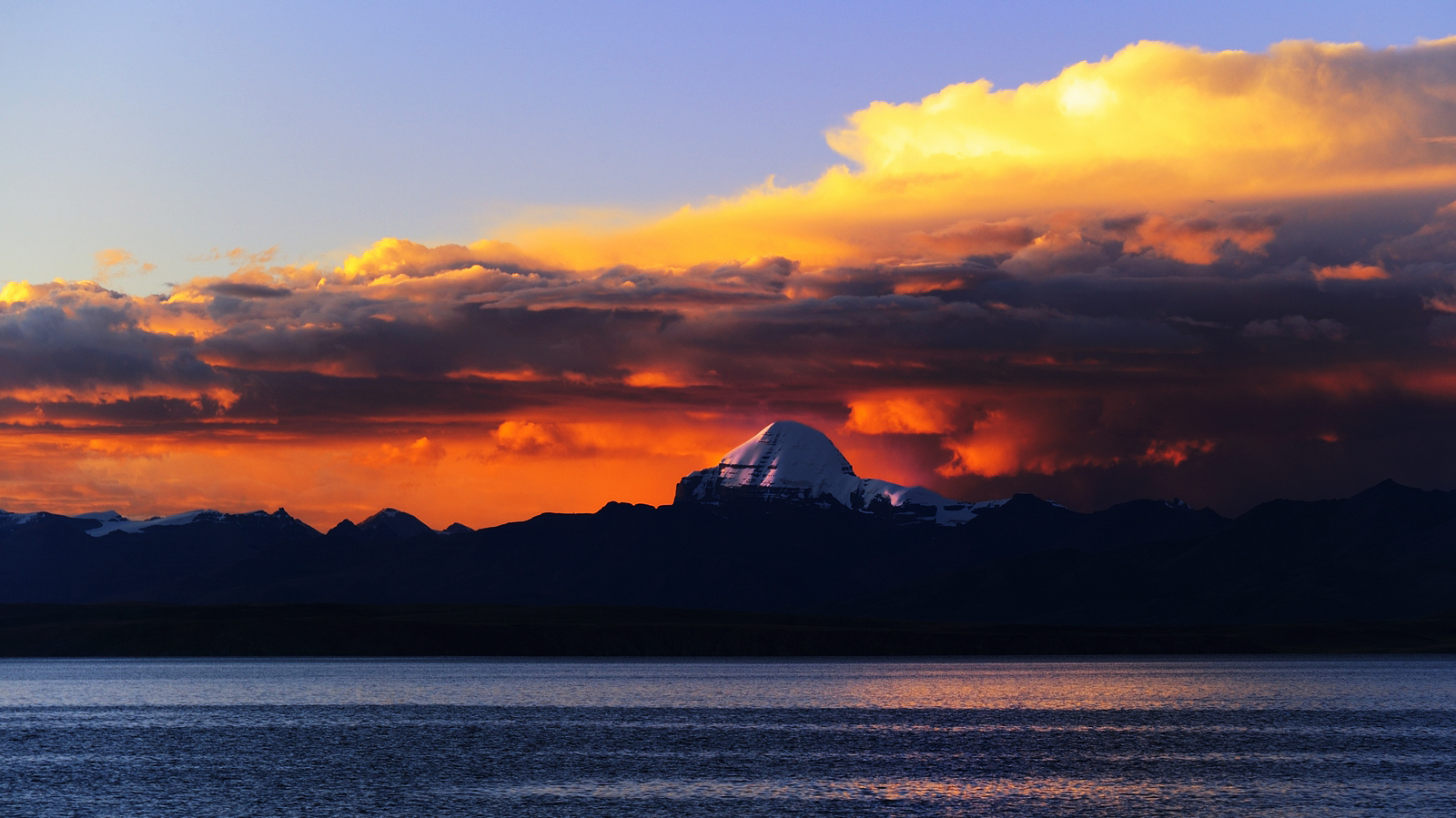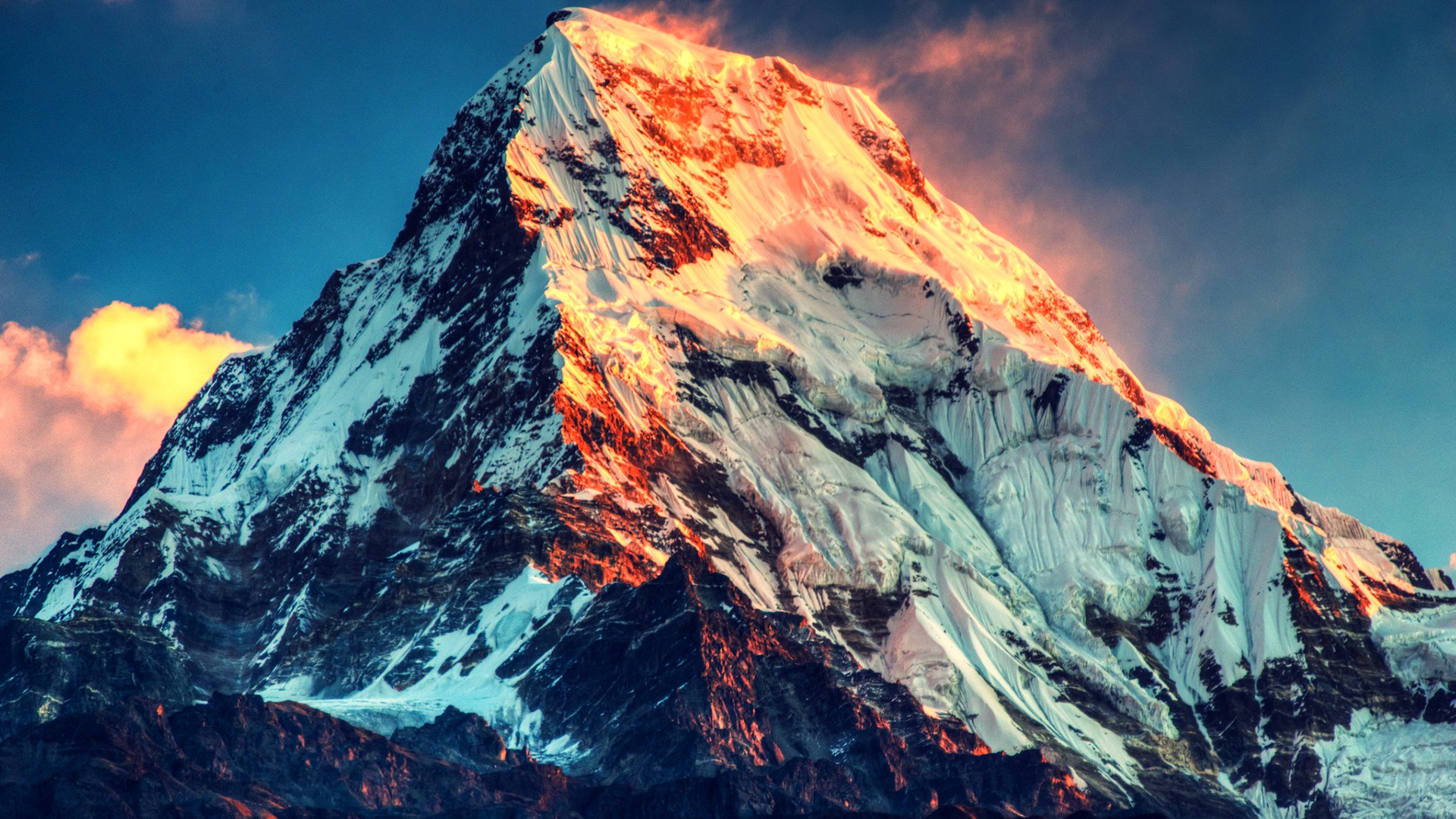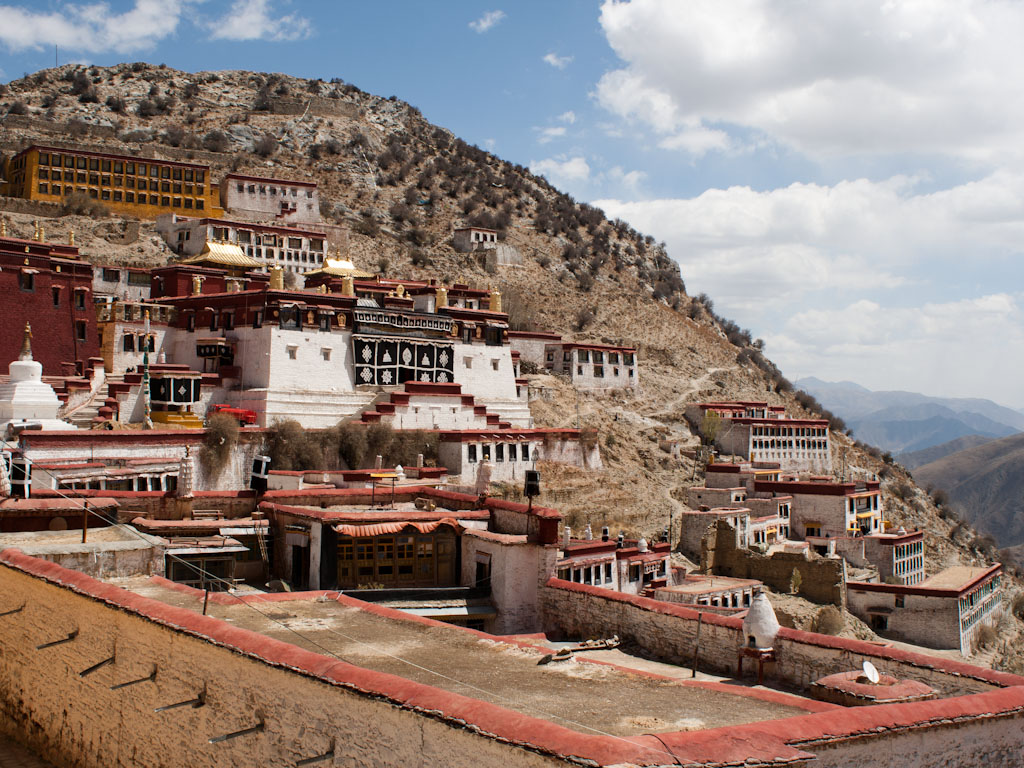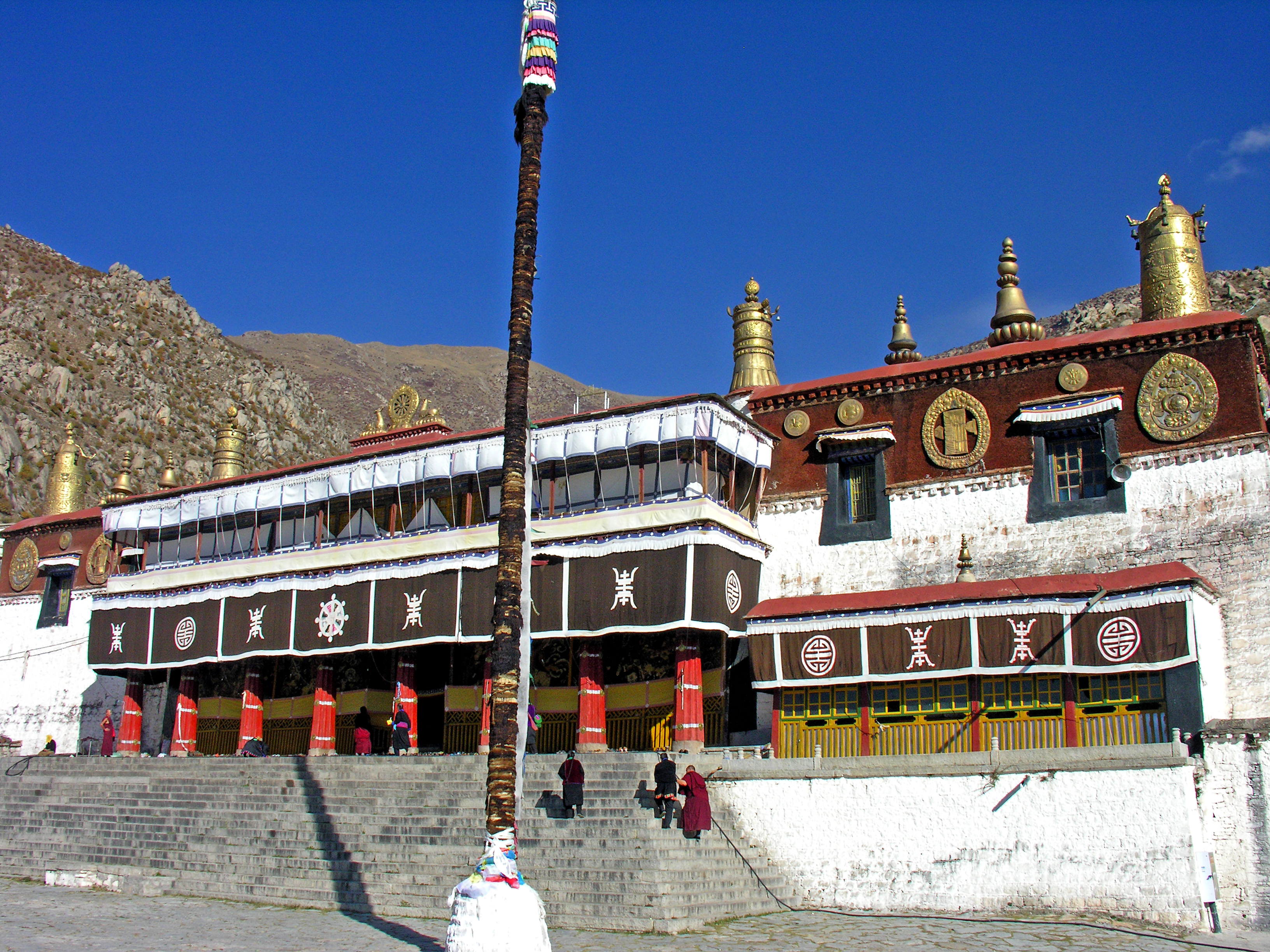As the main peak of the Gandise Mountains, Mount Kailash is the most famous holy mountain (Bonri Mountain and Himalayas are also holy mountains in Tibet) in Asian history. With 4 distinct sides, the gigantic pyramid has a round cap covered in eternal snow and ice. Standing far above surrounding mountains, Mount Kailash is just like a majestic ruler of Nature.
At an elevation of 6,656 meters above the sea level, snow-capped Kailash gives life to 4 grand rivers: Shiquan River, meaning Lion Fountain, known as Indus River in the lower reaches; Maquan River, meaning Horse Fountain, the origin of Yarlung Tsangpo River; Xiangquan River, meaning Elephant Fountain, known as Sutlej in the lower reaches; Kongqu River, meaning Peacock Fountain, the origin of the Ganges River. The 4 rivers gained their names from the geological features of their origins.
Mount Kailash gained the status of Holy Mountain well over 2,000 years ago. It still commands great reverence from Tibetan Buddhism, Hinduism, Bon religion and Jainism. Hindus believe this mountain is the abode of the Mahabrahman and sutras of Jainism say that Lhexa Bahal, the world’s first one to be relieved of earthly affairs, lives on this peak. Tibetan Buddhism believes that this mountain symbolizes the Bde-mchol-rdo-rje and the Rdo-rje-phag-mo and the Bon religion reveres it as a sacred holy mountain at the center of the world and the residence of all gods.
This legendary mountain has long been identified with the striking peak in the Himalayas that now bears its name. Shiva is therefore believed to dwell at its summit. Some traditions say the mountain is Shiva’s linga, while Lake Manasarovar is the yoni of his consort.





